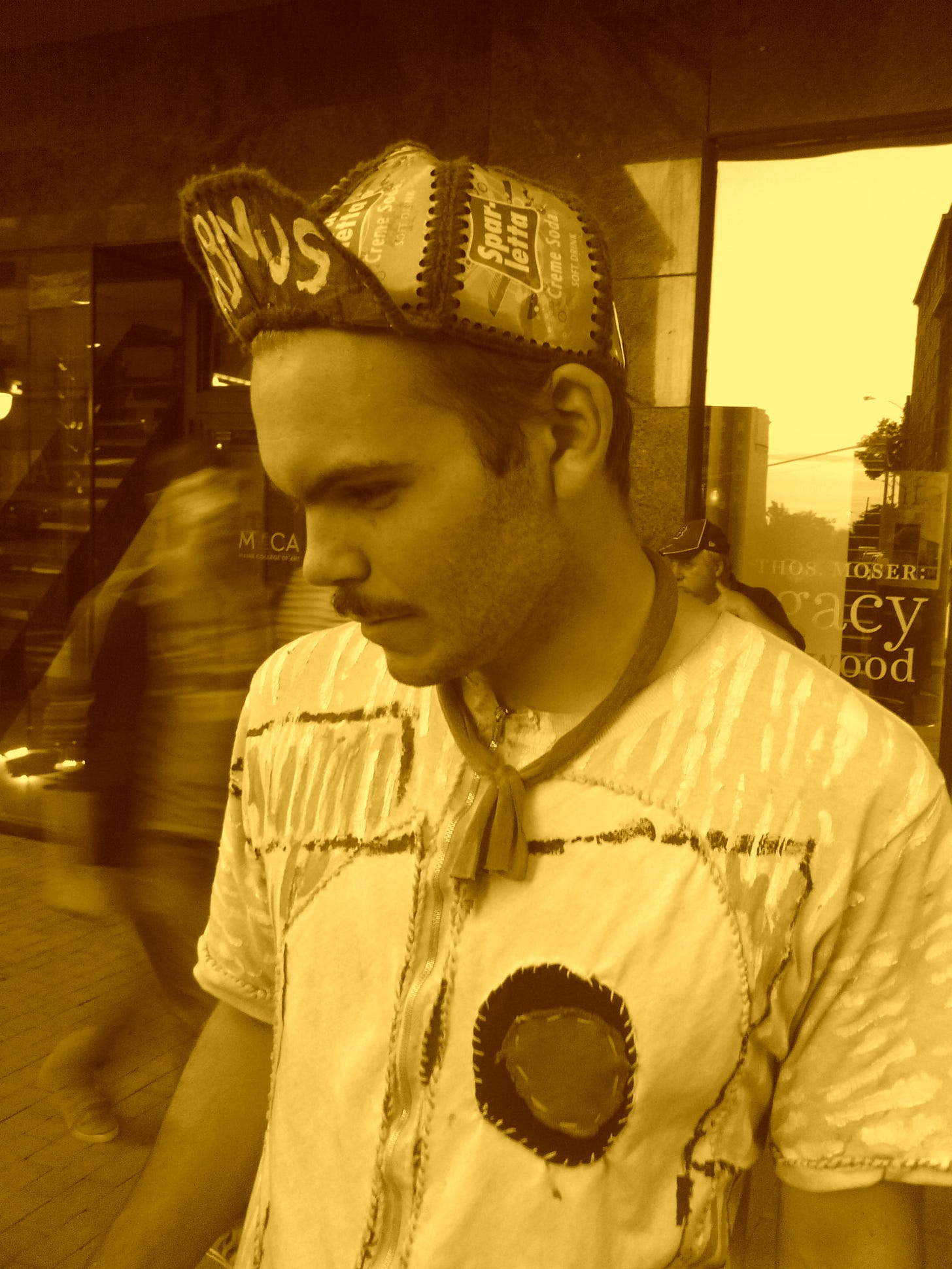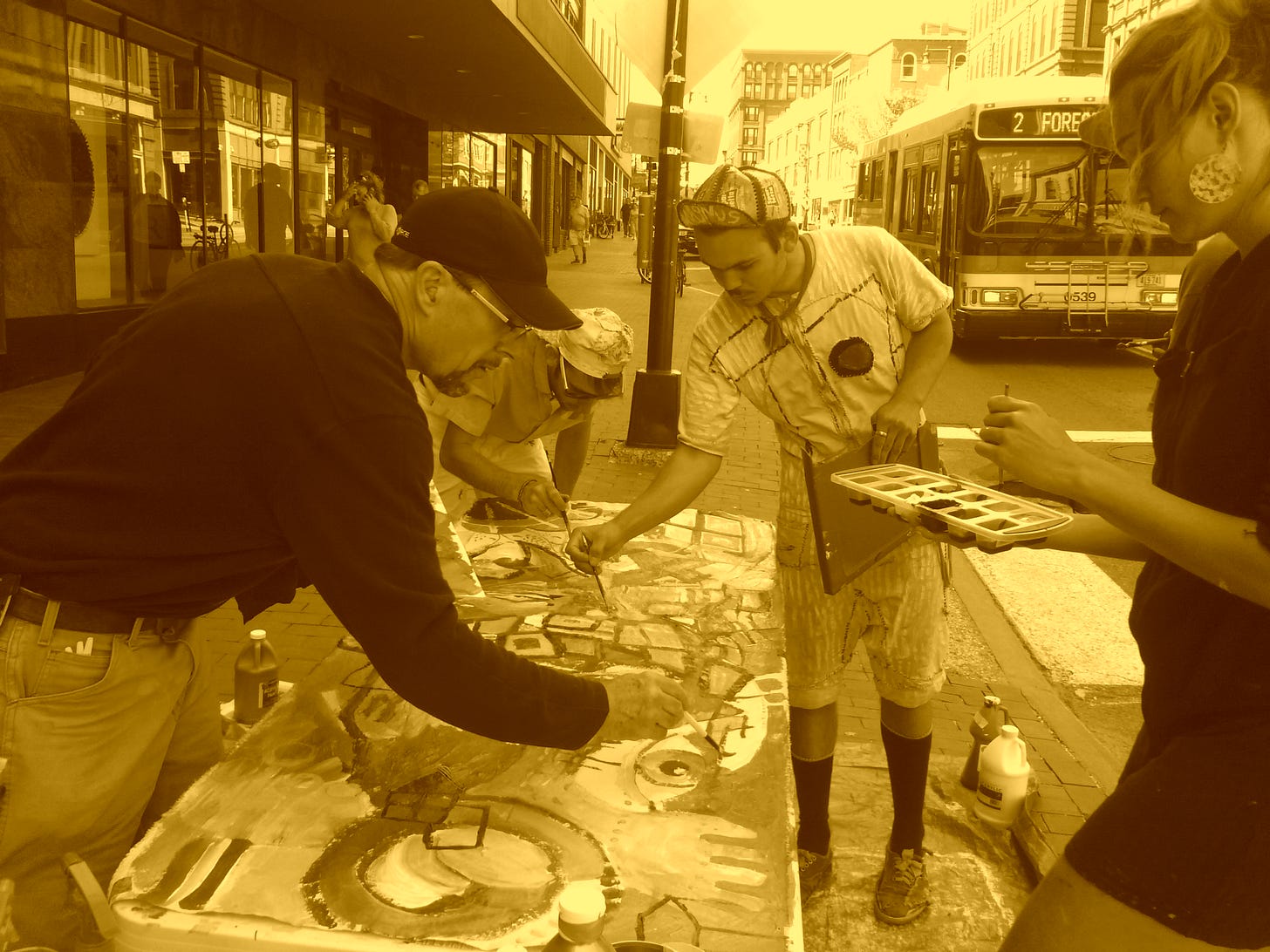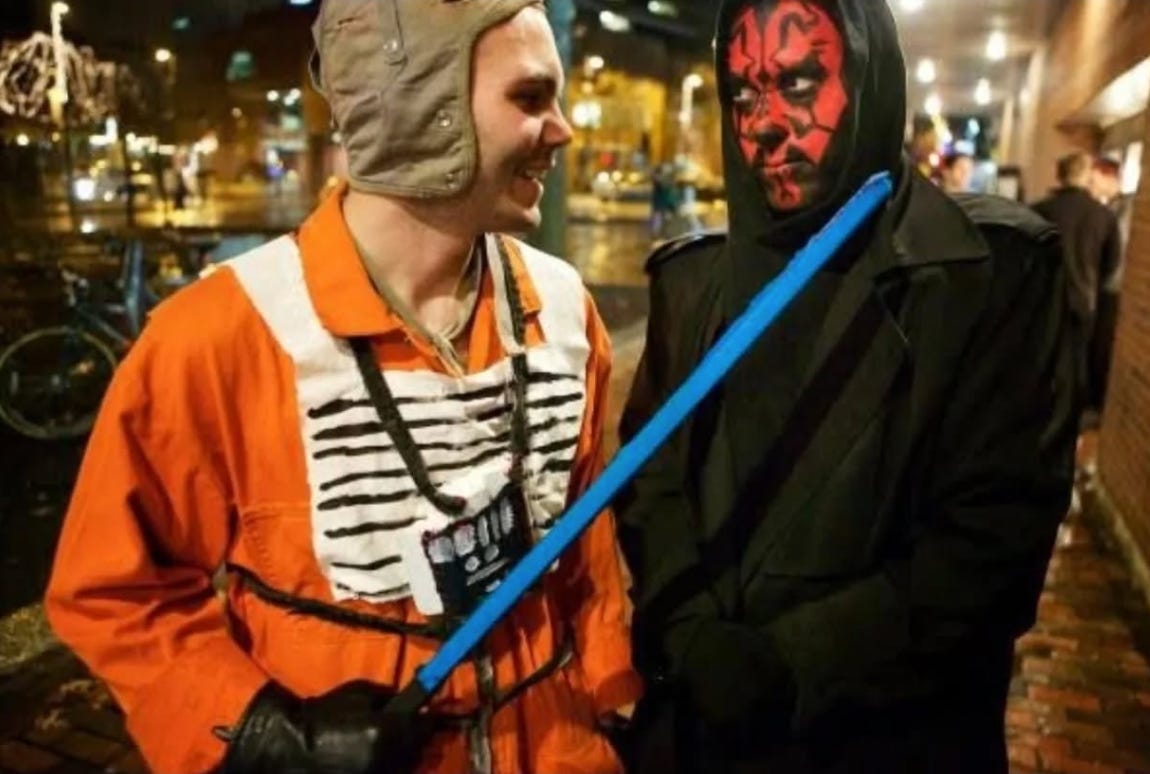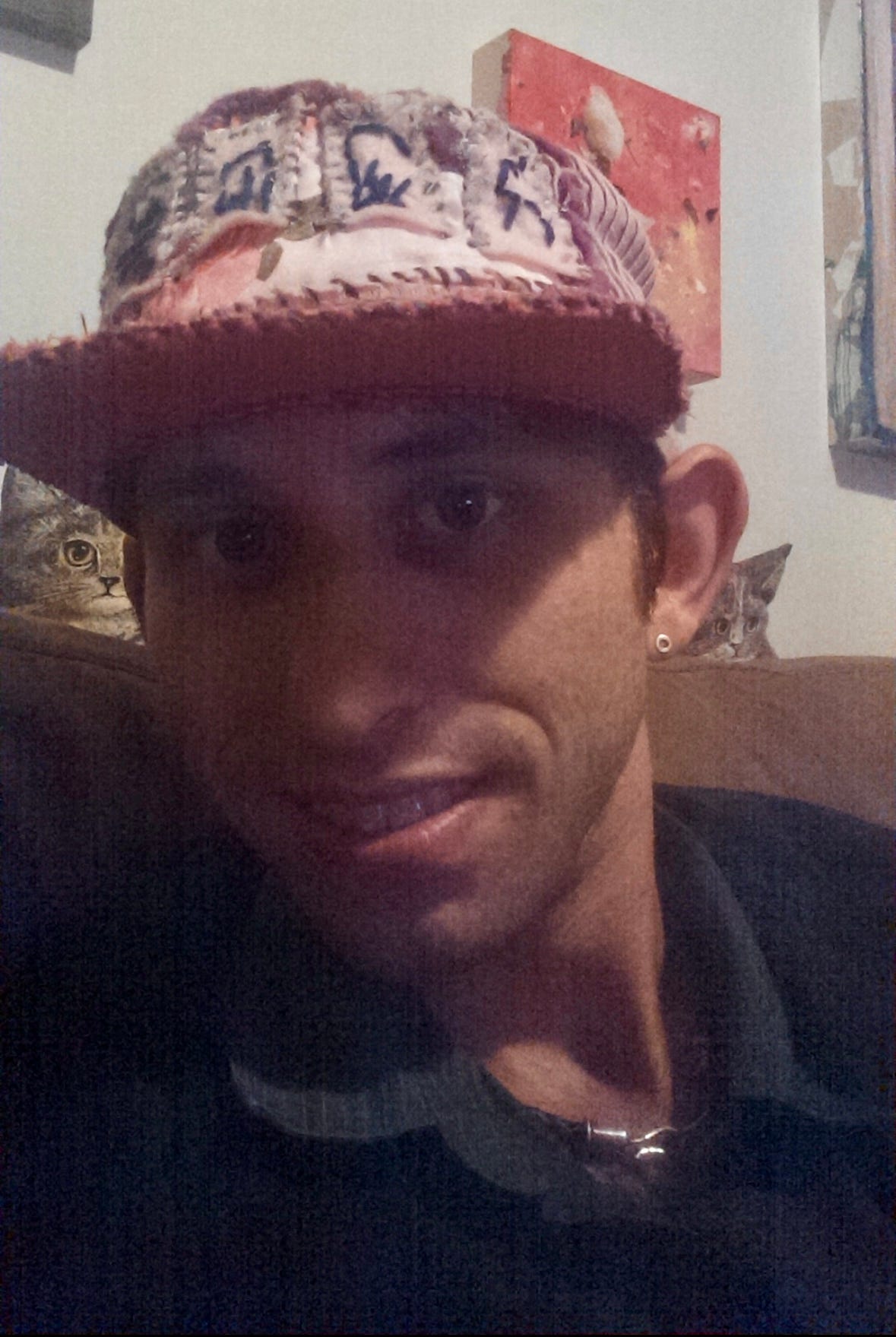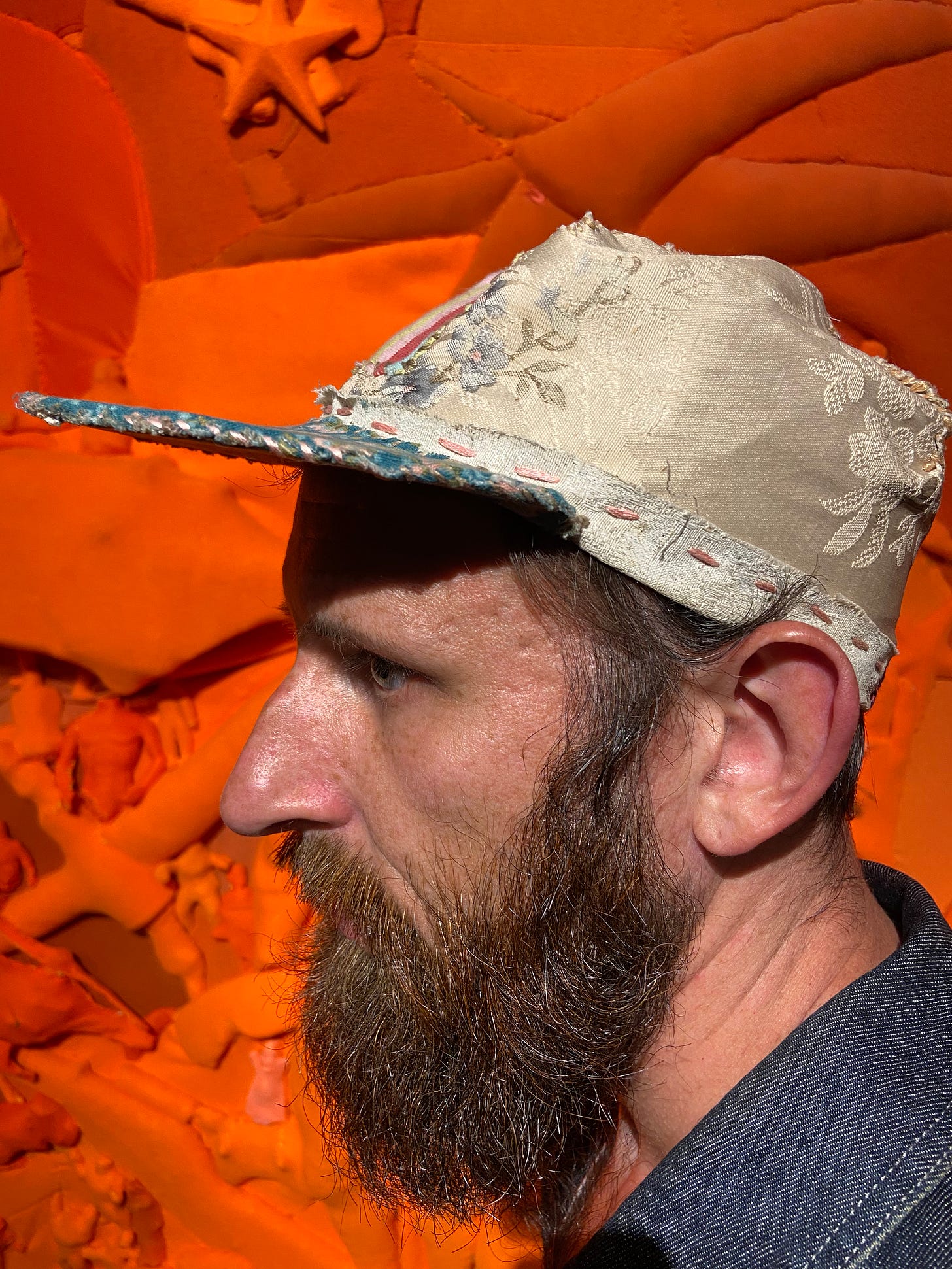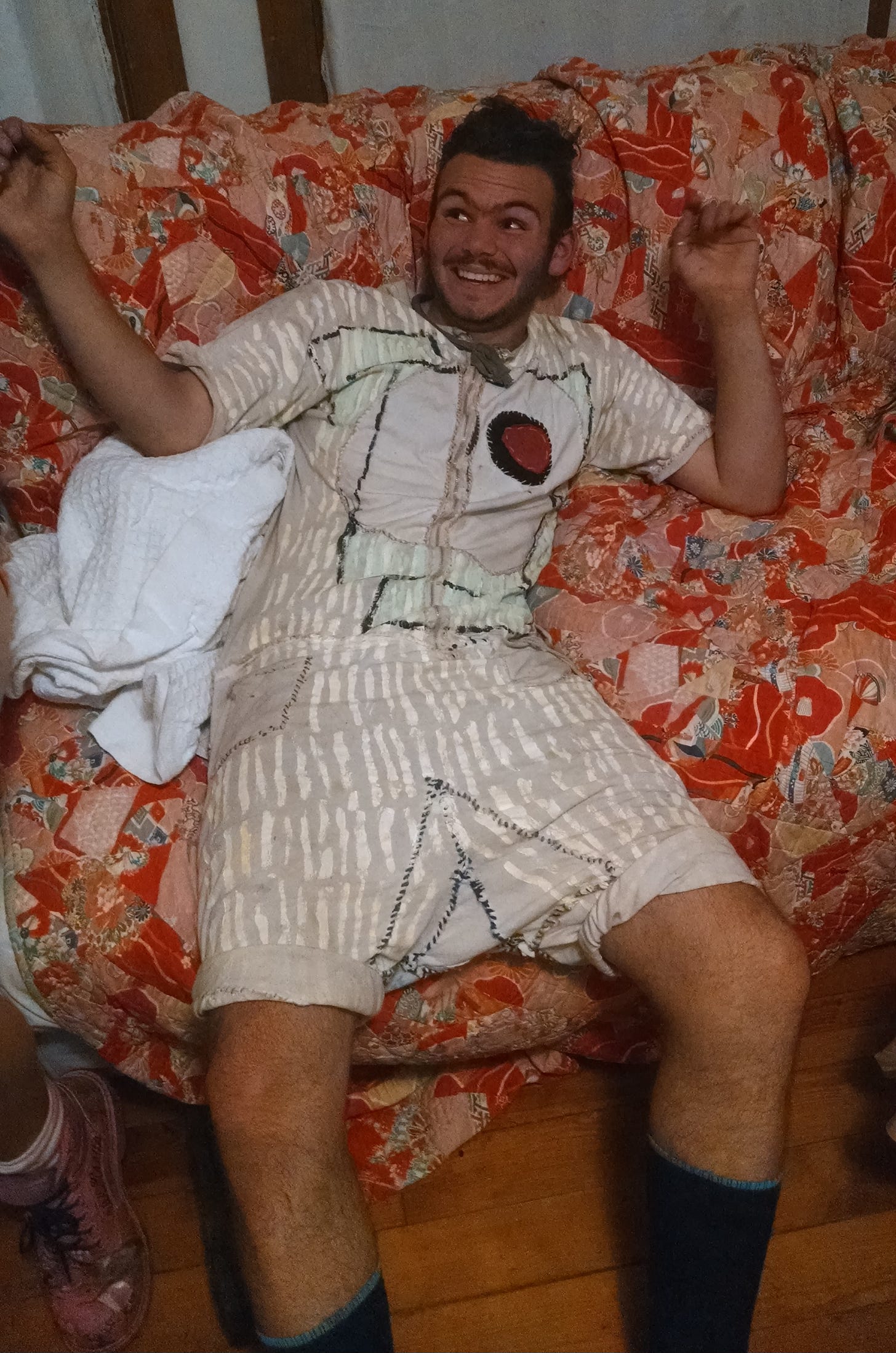How Long is a Thread?
Remembering Baxter Koziol, a conversation with Reed and Daniel
Daniel Sipe and Reed McLean sit down to talk about Baxter Koziol. We have recently been to see “An Absolute Everything” at BUOY gallery in Kittery, and we want to add to the stream of love cobbled together in response to Baxter’s passing.
RM: What’s your first memory of Baxter?
DS: My first memory of Baxter is at Art Night in I think probably 2014. Art Night was an event that was hosted by Will Hessian, Abbeth Russell, and John Sighless. And it happened religiously every Sunday. It would start at like 5 o’clock and it would go until the wee hours of the morning. And people would be making art. Somebody might be cooking. This was the Hidden Ladder Collective. Baxter was a very big part of it. He was sewing little dolls and hats and he was wearing a tail and a onesie that he had sewn out of scraps of fabric. He was a student at MECA at the time.
DS: I think my favorite memories of Baxter were the 12 hour painting marathons that we would do on the street in Portland. We would set up a table and have paints and things out, and every hour we would change the canvas. Anybody walking by on the street would be asked to join in.
DS: Another one is when we went to a Star Wars premiere, and he had sewn an entire costume. A onesie Luke Skywalker costume.
Baxter was featured early on in our interview series, also filmed at BUOY. It was a swelteringly hot day and he was wearing a mesh shirt. That show was about building houses and about construction and nostalgia and videotapes and action movies and comfort. He was also in the first ever Lights Out show “Debut.” He made his piece just for the show. It was an off white jumpsuit covered in pockets. A memory of Baxter outside the gallery after the opening, walking away alone, downhill. It is a memory of his shoulders, very erect, he moved like he knew where he was going.
RM: Remember how we left his work on his porch and it got stolen?
DS: Oh no, that’s terrible. Well, I talked to Baxter and we were working on getting the work returned to him and it was packed in a black plastic bag. And he’s like, oh, just leave it on my front porch. And so he gave me the address and I left it on his front porch. And I don’t know how long he was gone for, but when he got home it was gone. So it’s kind of a sad memory. I don’t remember him being angry about it. We both thought it was going to be okay, but it wasn’t. He went to Yale pretty soon after that. So he left the state. Another memory of him was... So we used to play a lot of PBL Robots, this group that I was part of, which is a card game that was invented by a group of friends, and he sewed me a custom hat as my favorite character in that part in this game. My favorite character was this character named Unico Hemingway. And he sewed me a Unico Hemingway hat. It was like a pink trucker hat.
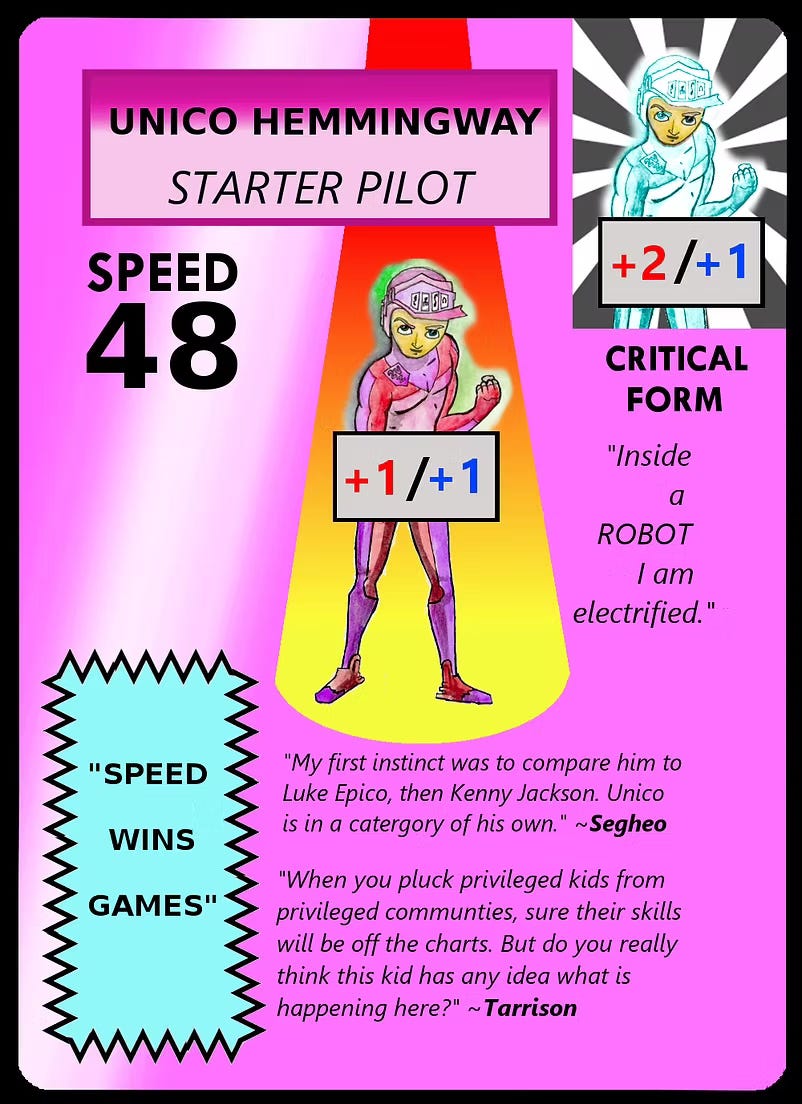
RM: Is that the one you have?
DS: No, I have another hat.
RM: Where’d you get that hat?
DS: I bought it on the street from him. He made me a custom pink hat and then I bought another hat.
RM: Where’s the pink one?
DS: Lost.
RM: And he made you a mask too?
DS: Yeah. It was like this really, really, terribly uncomfortable mask. It pushed in and scraped my nose. We were extras in a performance by the Bumbling Woohas at Geno’s Rock Club in Portland. We were these ghouls that danced on stage, just like running around the stage and through the audience. We were dressed in all black costumes, and the mask I wore in that performance was the mask he made. My friend collects masks, and so I gave it to him as a birthday present, and he still has it in his house.
RM: What about that performance stands out to you?
DS: I mean it was fun, we had a good time. Any time that we were going to do something, we would go all out, we would perform, we became the characters. When he dressed up for Star Wars he became Luke Skywalker. He would try to transform himself as much as he could.
RM: What’s your impression of the show at BUOY?
DS: I mean, one, it’s impressive. His work is always impressive. The amount of labor that goes into Baxter’s work is just, it’s so incredible. It’s so, so crazy. There also is this trapped feeling about his work that I didn’t realize before, but it’s all of these things completely encased in fabric. I don’t know, but I feel like there is something to be said for that after his death. Maybe it meant more than people realized. Being trapped in fabric. Being almost suffocated by fabric.
RM: Do you think maybe you’re reading into that because of the circumstances?
DS: Absolutely. And I don’t necessarily know if that has anything to do with what he created, and I haven’t felt that way about his work previously, but it did make me feel that way this time.
RM: How did you feel when you first saw the first BUOY show? Do you remember?
DS: I feel like his work changed a fair amount. I think there’s also a lot of older stuff in this show. That had never been shown or hadn’t been shown in a long time. Well, as Al said, I think there’s a lot of stuff in there that would have pissed Baxter off. But unfortunately, Baxter can’t decide what is shown or not. I think it’s part of the healing process for people to see as much as possible. People’s perception of it is their own. And it surrounds our memories of Baxter. And I think Al [Mead] is the only one who could handle it. It almost looks like the show is empty when you walk in, but as you go around corners, it becomes huge.
It’s like Baxter. He was not a very assuming person, but then he’s putting out this work that’s really interesting, really exceptional, and so different from anything anybody else is doing. He was so unique. I’ve never seen anyone... anything... remotely similar to it. I can’t even imagine how he put out so much work. It was so time-intensive and he created so much of it in a short life. Because the work that was shown in “An Absolute Everything” is probably not even much of the work that is out in the world. He used to sell hundreds of hats on the street to tourists and to people that don’t know who he is. But his hats were cool and people wanted them. So Baxter probably has hundreds of collectors that don’t even know they’re collectors of his work. That’s how he made a lot of his money, selling art on the street. Hats for $15.
RM: Do you have any hopes for how you’d like or how you think Baxter will be remembered?
DS: He was rather shy in many ways. I don’t know. It’s honestly so confusing.
RM: You mean that he’s dead?
DS: It doesn’t really make sense to me. I think one of the things he would like to be remembered for is his unibrow. He had the most prominent unibrow of anyone I’ve ever met. It was the most perfect unibrow. And his handsewn clothing. He was so against waste. Everything he owned, everything he did, everything was trash that he reused in his life, not just in his art. It was stuff that was discarded, things deemed useless by society. And that was his world, he would find new lives for things that were discarded.


